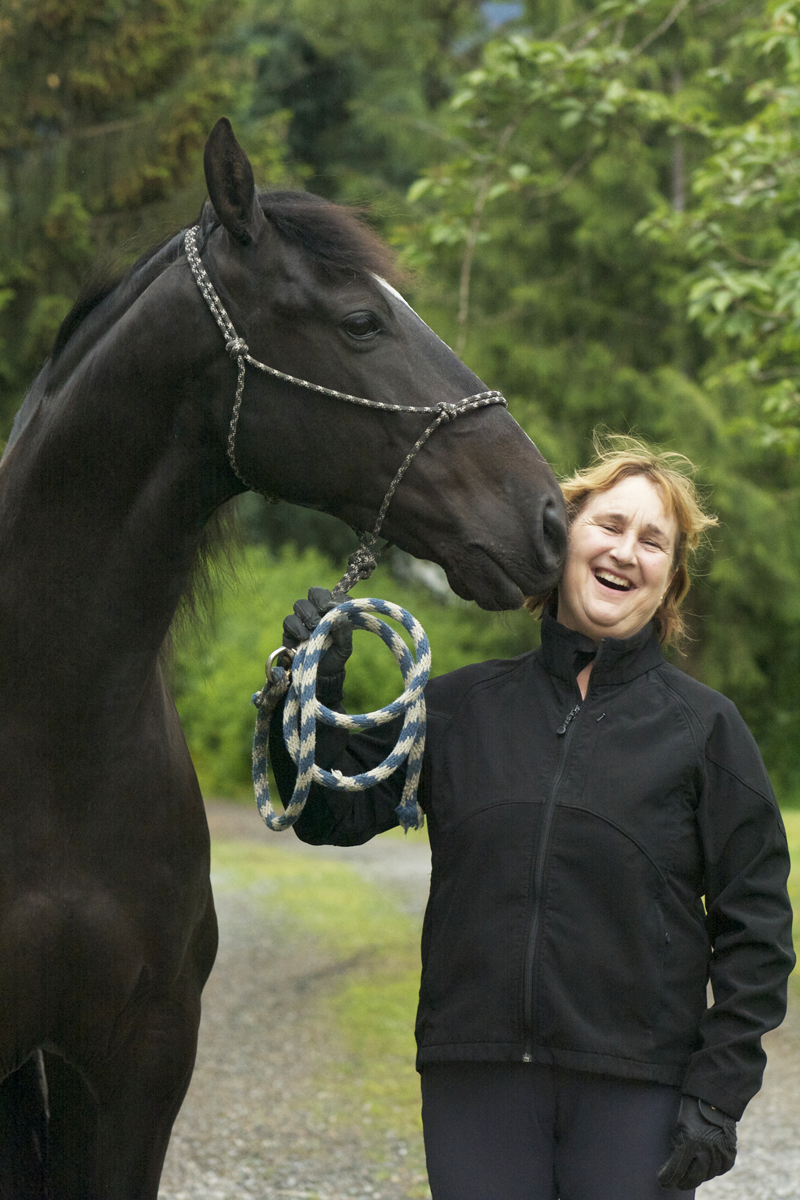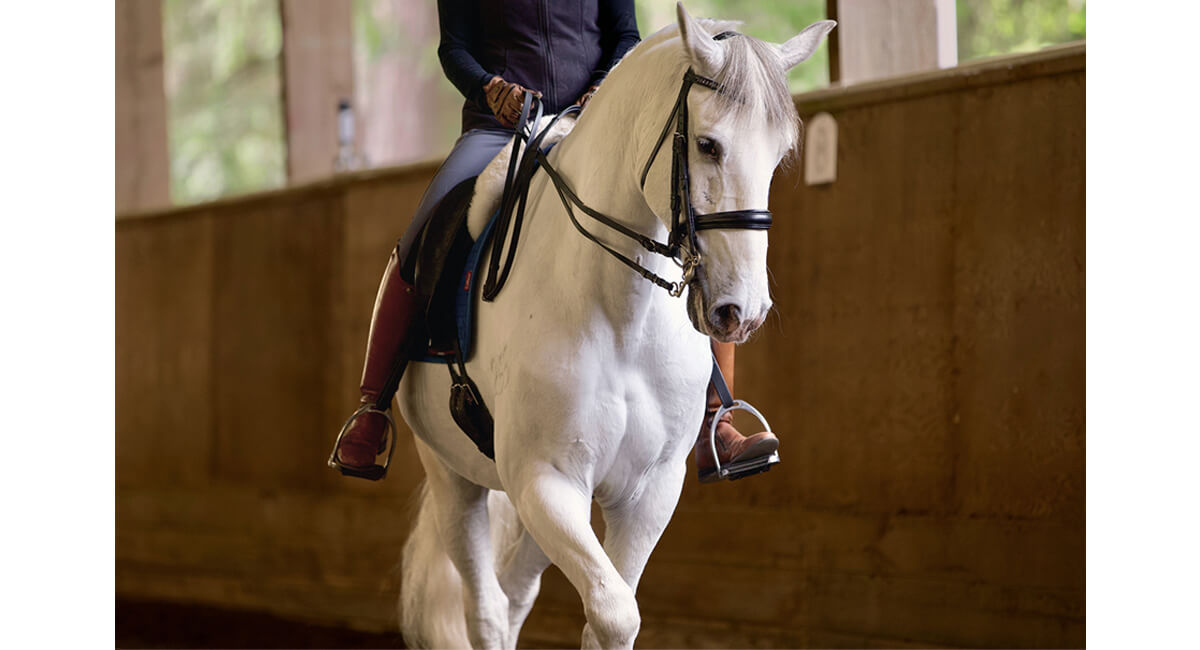Signs, Symptoms, and Solutions for Improving Your Horse’s Flexibility
Riding a horse who has achieved a high degree of suppleness gives a wonderful feeling to its rider. A supple horse moves fluidly and freely over the ground. Its hind legs reach well under its body while bending the joints of its legs; its rib cage is loose and its back undulates (demonstrated by a swinging, slightly lifted tail). A supple back is comfortable to ride and responsive to the rider’s seat. A supple horse is elastic and able to extend, collect, and bend without losing rhythm or relaxation.
Conversely, a stiff horse will drag its feet and move with stiff legs. The unsupple horse changes its rhythm or tempo when asked to perform a lateral movement like a small circle or a leg yield and may even become irregular. It will brace in its back or neck, lose its balance, and have difficulty with precision like performing a round circle or a shoulder-in with bend. Stiff horses often break gait when asked to extend and will resist halts or half-halts.
It’s important riders understand that when horses struggle with a request to perform a movement that the problem is often in the horse’s body, not in their mind. If a horse isn’t strong or flexible enough to do the work, he needs help, not force. So how do we develop a more supple horse?
Two Forms of Suppleness: Longitudinal and Lateral
First, understand that to be supple a horse needs to be both flexible and strong. As with human dancers and gymnasts, it takes years of training to reach the highest degree of suppleness. Trying to rush the process is likely to cause a horse pain or injury.
There are two forms of suppleness in horsemanship: longitudinal and lateral. Longitudinal suppleness is seen in horse who can elastically perform an extension and return seamlessly to a collected gait. They jump high, collect over their haunches, and stretch into the bit. Lateral suppleness is seen in horses who bend and move sideways easily and perform small circles. Both forms of suppleness result in a more engaged core and lifted back.
The two forms of suppleness are tightly connected to one another. If we improve one, we also improve the other. Longitudinal suppleness is improved by exercises that stretch the topline of the horse in a “straight” way. So, things like transitions from one gait to another or within the gait, or going from an extended canter to a collected canter and back to extended or practicing walk/trot transitions. We can also develop longitudinal suppleness riding up and down hills, jumping, galloping, and cavalletti work. All these improve longitudinal suppleness.
Exercises that increase lateral suppleness are those that ask the horse to bend: circles, serpentines, figure eights, and all lateral movements like leg yielding, shoulder in, travers (haunches-in), renvers (haunches out), half-pass, and pirouette. It’s always best in training to incorporate a mix of the two forms of suppleness work.
Exercises
- Circles (or lateral movements like shoulder-in) immediately followed by extended trot or canter and back to collected and another circle.
- Transitions: walk-trot-walk or canter-trot-canter repeated on a 20-meter circle. Or collected trot or canter to extended on a circle.
- Shallow loop serpentines followed by lengthened trots.
- 10-meter circles followed by a lateral movement like shoulder-in, travers (haunches in), leg yield, half-pass, or renvers (haunches out).
The possibilities are endless, and I encourage you to design your own exercises that incorporate a series of bending (lateral movements) and forward/collected movements (straight lines and transitions) that are appropriate in difficulty for your horse’s level. There are many dressage books that describe classical, systematic exercises that are centuries old and still in use by horsemen today—because they work so well!
Final Thoughts
A horse (like a human) is never “too” supple. It takes years of correct, consistent training to develop a strong, flexible horse. Horses left in the field for months will not be as supple as those kept in (correct) training.
Also, some horses are more naturally supple than others as conformation can lend itself to stiffness or flexibility. Remember, suppleness cannot be forced in any way; it’s developed. Overbending the neck or forcing a horse’s head down with things like side reins and draw reins can actually cause a horse to become stiffer. Horses’ necks stretch down and out as a result of training that improves rhythm, balance and suppleness. Poor riding can cause a horse to be stiff. Supple horses become more confident and feel better in their bodies and will demonstrate more joyful work.
See this article in the April 2025 Online Digital Edition:

Kim Roe grew up riding on the family ranch and competed in Western rail classes, trail horse, reining, working cow, and hunter/jumper. She trained her first horse for money at 12 years old, starting a pony for a neighbor.
Kim has been a professional dressage instructor in Washington state for over 30 years, training hundreds of horses and students through the levels. In recent years Kim has become involved in Working Equitation and is a small ‘r’ Working Equitation judge with WE United.
Kim is the editor of the Northwest Horse Source Magazine, and also a writer, photographer, and poet. She owns and manages Blue Gate Farm in Deming, Washington where she continues to be passionate about helping horses and riders in many disciplines.

